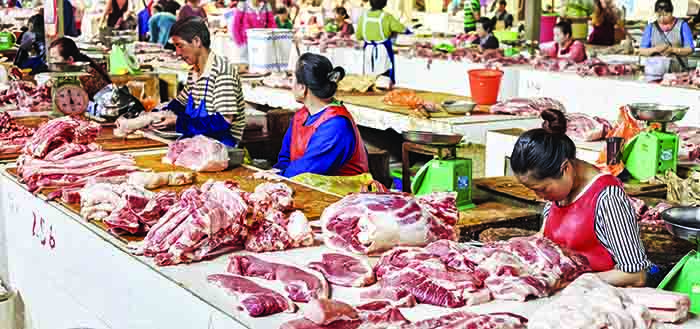Angela Christison, as sector strategy director, supports the AHDB Pork Sector Board to deliver strategic plans to benefit producers and processors alike
In May 2018, I visited China for the first time. The scale of the place is mind-blowing and with 1.4 billion people for whom pigmeat is as central to daily life as tea is to the British, it’s a place to understand if you are in our industry.
China houses half the world’s pigs and, of all meat consumed there, 63% is pigmeat. Population growth and aspiration to eat more meat means every (and I do mean every!) part of the pig is prized. Cuts we do not consume are relished and this synergy has meant buoyant export opportunities for the UK.
I returned to China recently for the World Pork Conference in Chengdu and since my last visit almost a quarter of the world’s pig population has been lost to ASF, with China suffering extensive losses.
The impact on consumption and trade flow will be staggering over the next few years and will extend to many proteins. With no vaccine currently available and the added difficulty of controlling it in the wild population, the phenomenon is likely to endure for some time.
As awful as that is, there are opportunities for countries who remain ASF-free to increase exports. So far this year, total UK exports of pigmeat (including offal) are up 11% – to China they are up 58%. This is a welcome ray of light as we deal with challenges in our domestic market.
While Chinese officials acknowledge there will be a demand gap so large that it’s impossible for other countries to span in the short- term, we must not let the light of this opportunity blind us. Mitigating action is already being taken with the release of strategic stocks to ensure supply and curb-price rises.
The Chinese government has announced financial aid, at central and provincial levels, to support production in an effort to re-balance the situation. There are subsidies for breeding herds, more processing plants (to reduce live pig transport distances) and an easing of land, building and environmental restrictions. Some of these measures, combined with high pig prices, will encourage the rejuvenation of backyard operations, so long as they find enough sustainably healthy pigs.
The big question is, how long will it take for China to recover? Estimates range from an optimistic one year, through to five and beyond. In reality, the time it takes will be governed by the balance of power between ASF, itself, and the effectiveness of the counter measures.
However long it takes, there may be a legacy of profound, and possibly sustained, change in diet. Alternative proteins have already come into play with beef, lamb, sea food and fish consumption all rising. Will this lead to a change in future eating habits?
There are more questions than answers with so many moving parts of biology, economics and social practices. Amid the uncertainly is opportunity and potential to invest, ready for a new set of dynamics when the situation rebalances.




